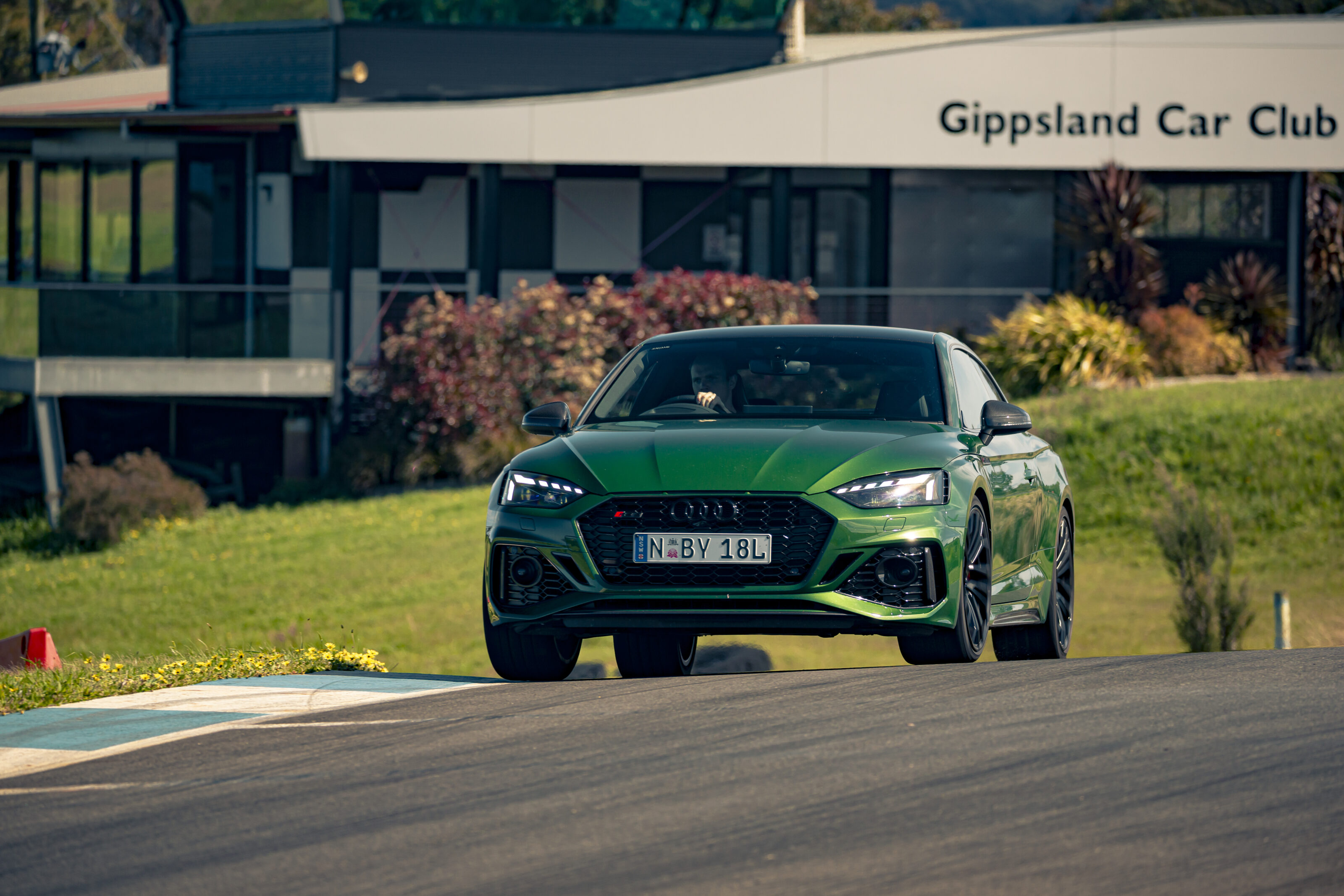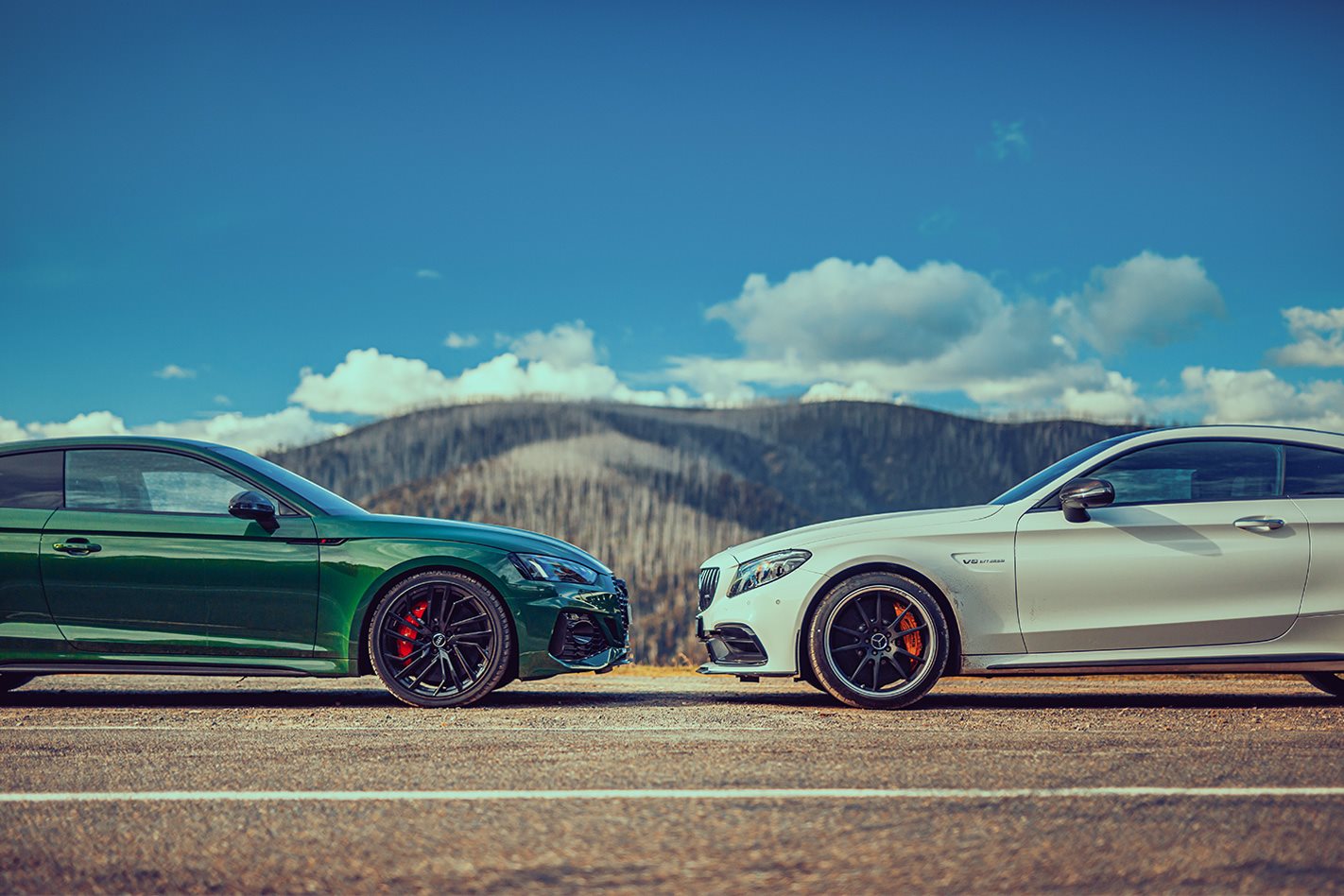Things we like
- Powerful, responsive engine
- Improved chassis adjustability
- Great traction
Not so much
- Quite heavy
- Needs more rear drive bias
- Gearbox could be quicker
The name remains the same but the character is vastly different. That’s the best way to describe the latest Audi RS5 Coupe, and it’s particularly the case on track.
In its first iteration, the RS5 was virtually a racing car in a two-door luxury coupe bodyshell. On the plus side, a screaming 8250rpm naturally aspirated V8, whip-crack dual-clutch gearbox and finely-honed dynamics; on the minus, weighty steering, an occasionally tough ride and an interior that prioritised support over comfort.
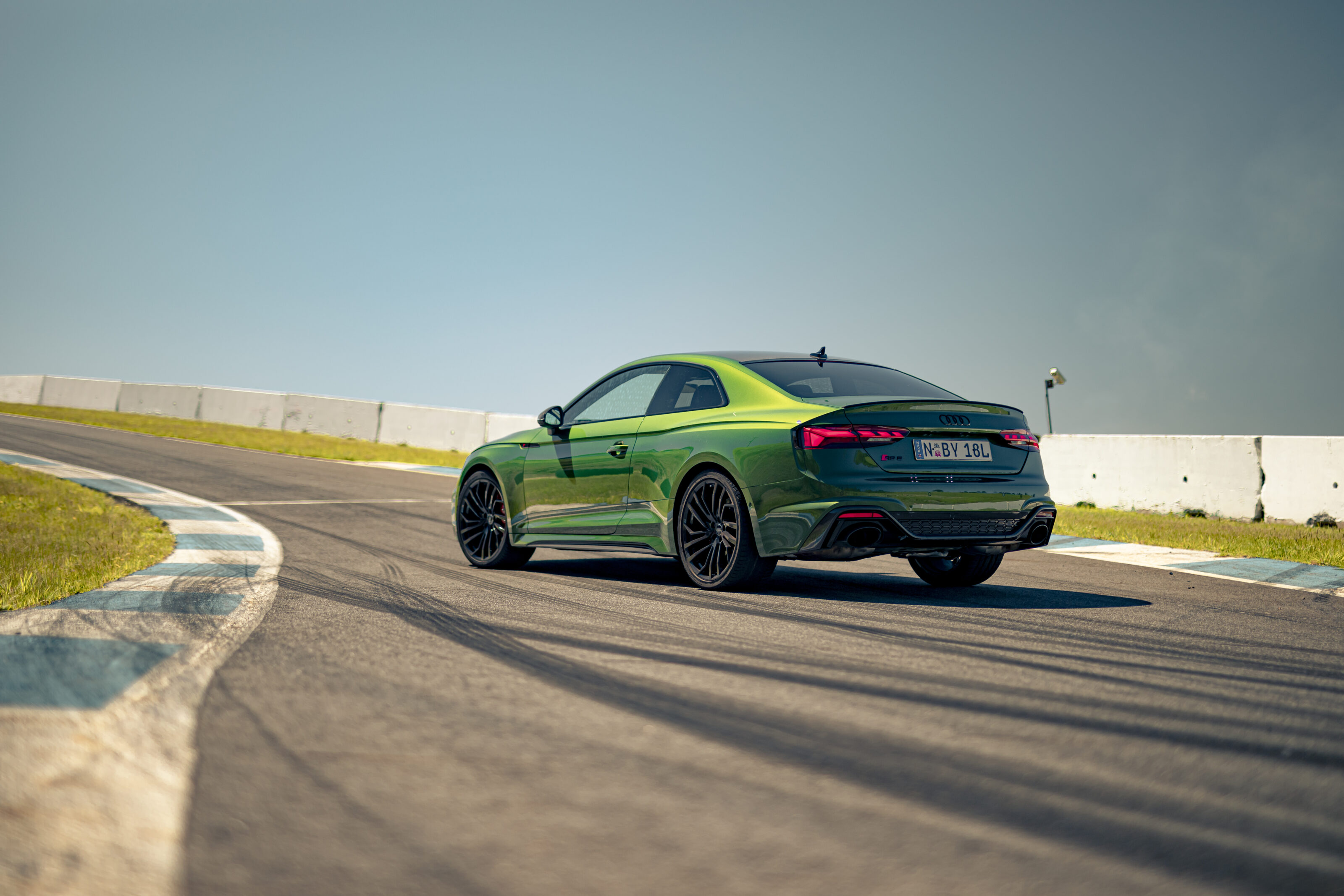
The current car treads a very different path. Out goes the soaring atmo V8, replaced by a downsized twin-turbo V6; the dual-clutch makes way for a torque-converter automatic and while the suspension doesn’t necessarily prioritise comfort, it certainly makes a concerted effort to soak up lumps and bumps in a way its predecessor didn’t.
These changes make the latest RS5 a very, very impressive road car, but do they hamper its ability on track? An RS product should be able hold its own on a circuit and that’s what we’ve come to Bryant Park to discover.
Don’t think the RS5 is just a two-door RS4. It’s 30kg lighter than the five-door, as well as 60mm shorter in the wheelbase and wider in track by 18mm at the front and 13mm at the rear.
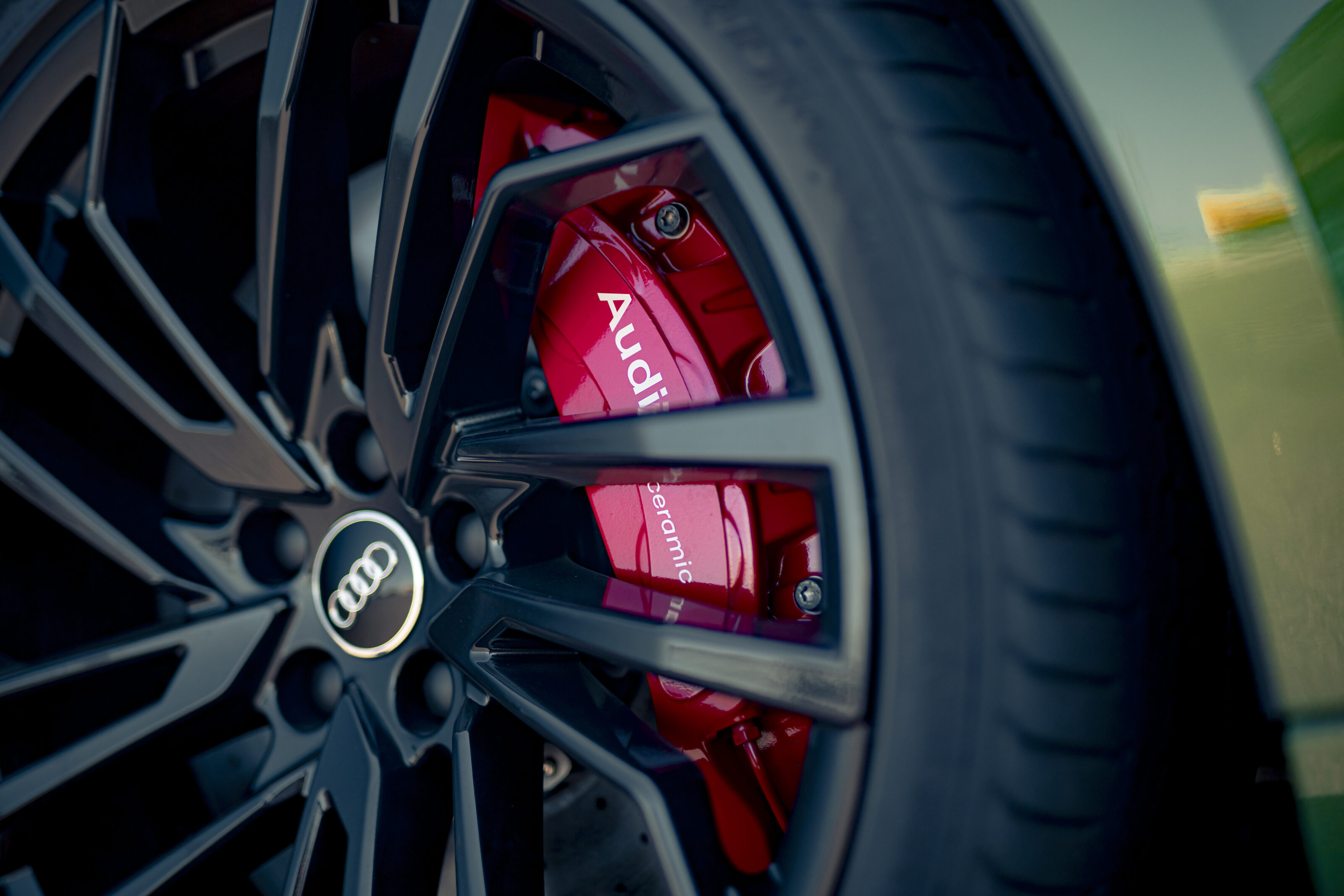
Our test RS5 also wears a couple of choice optional extras, notably the Dynamic Ride Control adaptive dampers and carbon-ceramic brakes with whopping 400mm front rotors, though they’ll set you back $13,600.
First impressions are very positive. The 2.9-litre twin-turbo V6 doesn’t feel as ‘special’ as the old V8 but it’s still a very impressive engine in its own right, with great response for a boosted unit and torque that the previous naturally aspirated eight could only dream about.
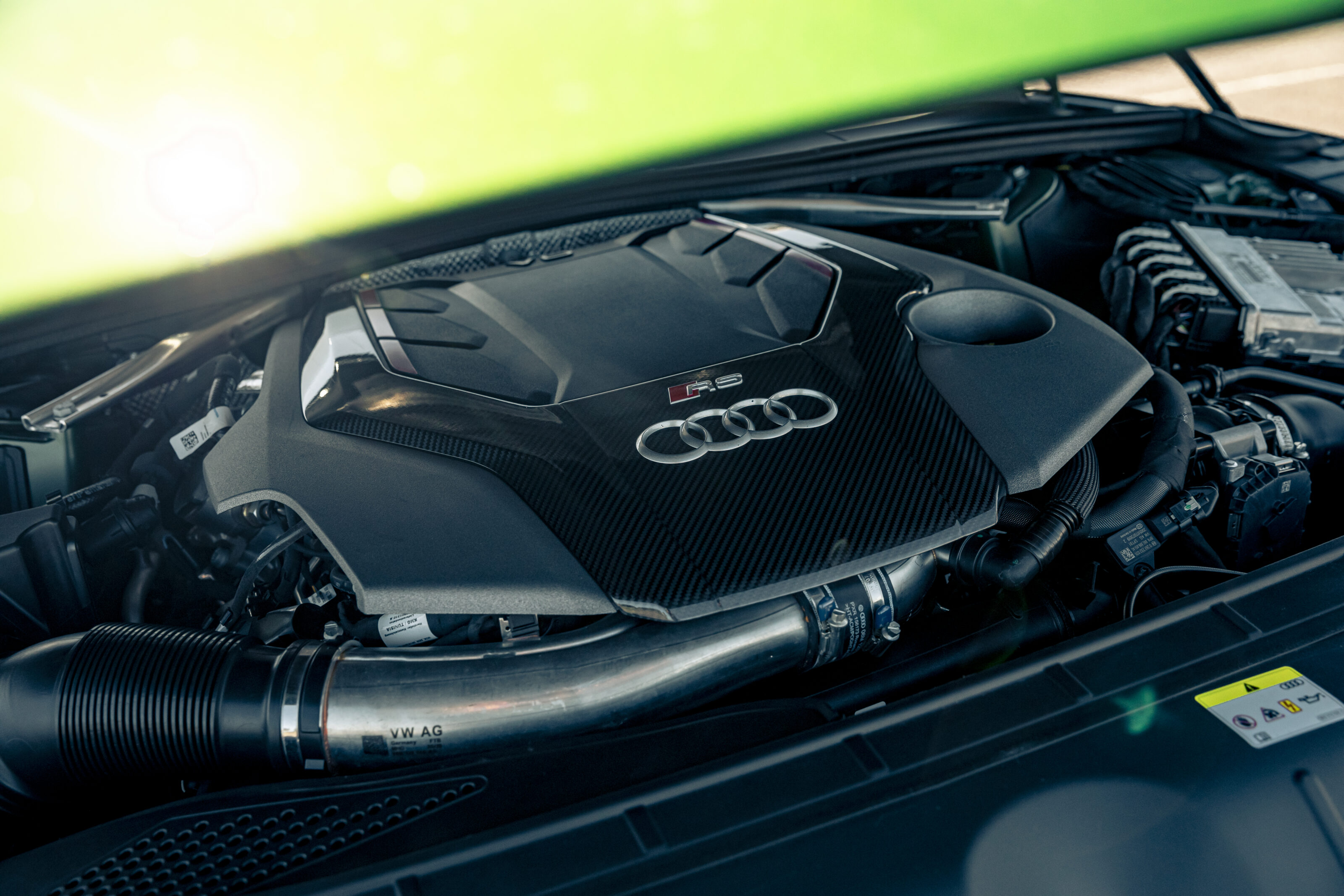
In terms of slow-speed operation the new eight-speed automatic is a big improvement over the prior dual-clutch, but while upshifts are still plenty rapid, downshifts can be a little hesitant, though this is as much down to the very short second gear as much as the gearbox type.
Thankfully, the monster torque – the 600Nm peak is available from just 1900rpm – means that going a gear higher carries little penalty. Exiting the final corner with 3000rpm on the tacho in third gear, the RS5 rockets up the hill like the incline doesn’t exist.
To paraphrase Monty Python, every kiloWatt is sacred and not a single one is wasted thanks to the quattro all-wheel drive system, but discovering this does require the deactivation of the ESP system which, though it does a good job of letting the car be driven hard, does cut in should it detect any slip over a ripple strip or crest.
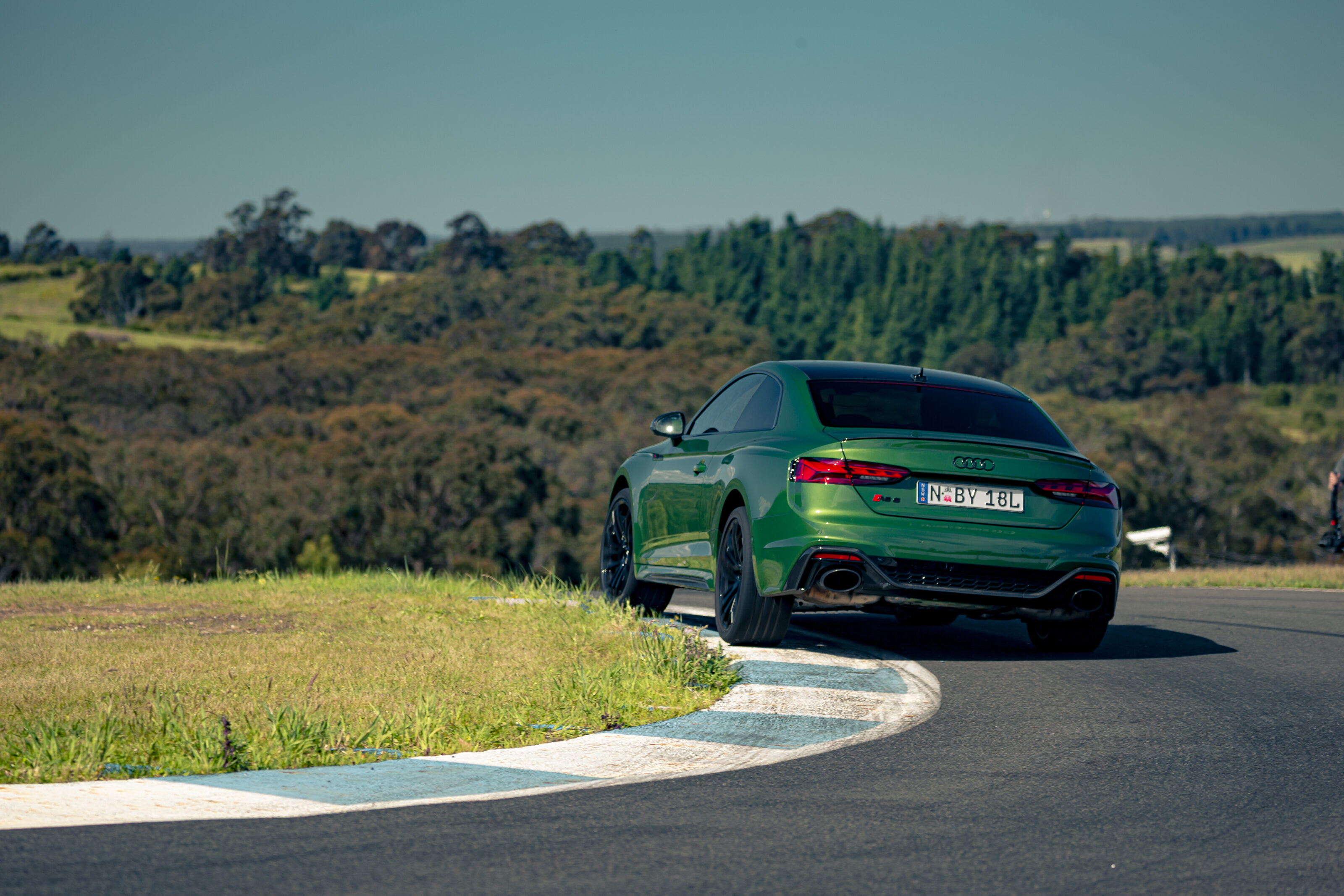
It’s this ability to deploy all its firepower that explains the RS5’s 1:06.7sec lap time, however while the quattro system giveth with one hand in the form of traction, it taketh away with the other when it comes to handling balance.
For the first half of the corner the RS5 is great. It turns in crisply, the steering remaining relatively light even in Dynamic mode, further evidence of the philosophical shift at Audi Sport. It rotates keenly mid-corner, too, a lift of the throttle tucking the nose in and helping the car point towards the exit.
The trouble comes when you want to complete the manoeuvre. The RS5’s all-wheel drive system is split 40:60 front-to-rear as a default and can shuffle between 70:30 and 15:85 as required, while the sports rear diff can also distribute power left and right.
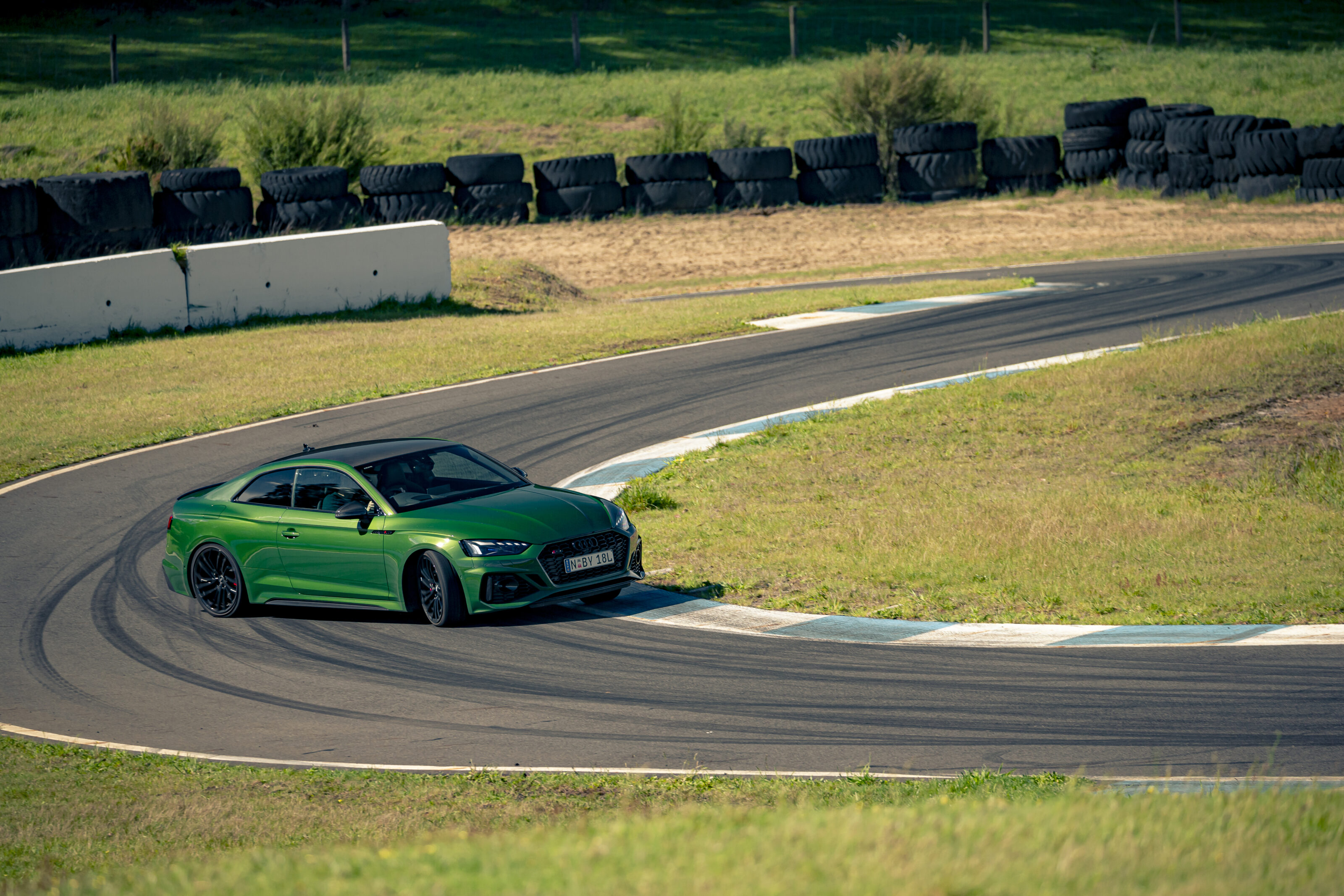
It’s very good, far better than Audis of yesteryear in its responsiveness, and out of Bryant Park’s slowest corner will require a jab of opposite lock, but in the longer corners that predominate adding throttle tends to pull the front wide slightly rather than rotate the rear.
At a number of points throughout the lap I have to wait a fraction longer than would be ideal to get back on the accelerator. If this happens five times, with each costing a tenth of a second, there’s a half-second gain straight away.
In a perfect world there would be a bit more rear bias allowing the car to be rotated on the throttle while still benefiting from the tractive advantage of all-wheel drive. It’s something the likes of Porsche’s ‘4S’ models, the Nissan GT-R and even BMW’s xDrive does very well.

Perhaps the RS5’s front bite was hampered slightly by having mismatched tyres, Pirellis on the front and Hankooks on the rear (supply chain issues have been causing havoc for many manufacturers in getting the correct tyres) but it didn’t feel to be an issue.
In essence, Audi Sport seems to have taken a conscious decision to improve the RS5’s road manners at a slight cost to its on-limit behaviour and it’s a decision that should be applauded, as it’s where the car will be operating the vast majority of the time.
Nevertheless, a little extra torque to the rear would liven up the car both on road and track and add a little more entertainment to the RS5’s crushing competence.
LEADERBOARD
| Audi RS5 Coupe | 1:06.7 |
| Lexus RC F Track Edition | 1:06.8 |
SPECIFICATIONS
| Body: | 2-door, four-seat coupe |
| Drive: | all-wheel |
| Engine: | 2894cc V6. DOHC, 24v, twin-turbo |
| Bore/stroke: | 84.5 x 86.0mm |
| Compression: | 10.0:1 |
| Power: | 331kW @ 5700-6700rpm |
| Torque: | 600Nm @ 1900-5000rpm |
| Power/Weight: | 196kW/tonne |
| Transmission: | 8-speed automatic |
| Weight: | 1685kg |
| 0-100km/h: | 3.9sec (claimed)/3.81sec (tested) |
| Suspension: | Multi-links, coil springs, adaptive dampers, anti-roll bar (f/r) |
| L/W/H: | 4723/1861/1360mm |
| Wheelbase: | 2766mm |
| Tracks: | 1598/1588mm (f/r) |
| Steering: | Electrically assisted rack-and-pinion |
| Brakes: | 400mm ventilated/drilled carbon-ceramic discs, 6-piston calipers (f); 330mm ventilated/drilled discs, single-piston calipers (r) |
| Wheels: | 20 x 9.0-inch (f/r) |
| Tyres: | 275/30 ZR20 Pirelli P Zero (f) Hankook Ventus evo2 (r) |
| Price: | $150,900 ($188,236 as-tested) |
Things we like
- Powerful, responsive engine
- Improved chassis adjustability
- Great traction
Not so much
- Quite heavy
- Needs more rear drive bias
- Gearbox could be quicker


